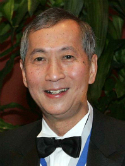Respiration-correlated spiral CT: A method of measuring respiratory-induced anatomic motion for radiation treatment planning Journal Article
| Authors: | Ford, E. C.; Mageras, G. S.; Yorke, E.; Ling, C. C. |
| Article Title: | Respiration-correlated spiral CT: A method of measuring respiratory-induced anatomic motion for radiation treatment planning |
| Abstract: | We describe a method for generating CT images at multiple respiratory phases with a single spiral CT scan, referred to as respiratory-correlated spiral CT (RCCT). RCCT relies on a respiration wave form supplied by an external patient monitor. During acquisition this wave form is recorded along with the initiation time of the CT scan, so as to "time stamp" each reconstructed slice with the phase of the respiratory cycle. By selecting the appropriate slices, a full CT image set is generated at several phases, typically 7-11 per cycle. The CT parameters are chosen to optimize the temporal resolution while minimizing the spatial gap between slices at successive respiratory cycles. Using a pitch of 0.5, a gantry rotation period of 1.5 s, and a 180° reconstruction algorithm results in ∼ 5 mm slice spacing at a given phase for typical respiration periods, and a respiratory motion within each slice that is acceptably small, particularly near end expiration or end inspiration where gated radiotherapy is to occur. We have performed validation measurements on a phantom with a moving sphere designed to simulate respiration-induced tumor motion. RCCT scans of the phantom at respiratory periods of 4, 5, and 6 s show good agreement of the sphere's motion with that observed under fluoroscopic imaging. The positional deviations in the sphere's centroid between RCCT and fluoroscopy are 1.1±0.9 mm in the transaxial direction (average over all scans at all phases ± 1 s.d.) and 1.2±1.0 mm in the longitudinal direction. Reconstructed volumes match those expected on the basis of stationary-phantom scans to within 5% in all cases. The surface distortions of the reconstructed sphere, as quantified by deviations from a mathematical reference sphere, are similar to those from a stationary phantom scan and are correlated with the speed of the phantom. A RCCT scan of the phantom undergoing irregular motion, demonstrates that successful reconstruction can be achieved even with irregular respiration. Limitations from x-ray tube heating in our current CT unit restrict the length of the scan region to 9 cm for the RCCT settings used, though this will not be a limitation for a multislice scanner. RCCT offers an alternative to the current method of respiration-triggered axial scans. Multiple phases of respiration are imaged with RCCT in approximately the same scanning time required to image a single phase with a triggered axial scan. RCCT scans can be used in connection with respiratory-gated treatment to identify the patient-specific phase of minimum tumor motion, determine residual tumor motion within the gate interval, and compare treatment plans at different phases. © 2003 American Association of Physicists in Medicine. |
| Keywords: | treatment planning; cancer radiotherapy; neoplasms; quality control; computer assisted tomography; tomography, spiral computed; algorithm; radiotherapy planning, computer-assisted; phantom; phantoms, imaging; monitoring, intraoperative; artifacts; image reconstruction; computed tomography; respiratory mechanics; breathing pattern; thorax; radiographic image enhancement; spiral computer assisted tomography; radiotherapy, computer-assisted; movement; respiratory motion; gated radiotherapy; gated imaging; human; priority journal; article |
| Journal Title: | Medical Physics |
| Volume: | 30 |
| Issue: | 1 |
| ISSN: | 0094-2405 |
| Publisher: | American Association of Physicists in Medicine |
| Date Published: | 2003-01-01 |
| Start Page: | 88 |
| End Page: | 97 |
| Language: | English |
| DOI: | 10.1118/1.1531177 |
| PUBMED: | 12557983 |
| PROVIDER: | scopus |
| DOI/URL: | |
| Notes: | Export Date: 12 September 2014 -- Source: Scopus |
Altmetric
Citation Impact
BMJ Impact Analytics
Related MSK Work






